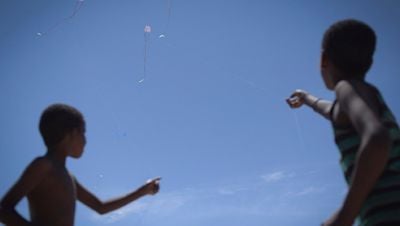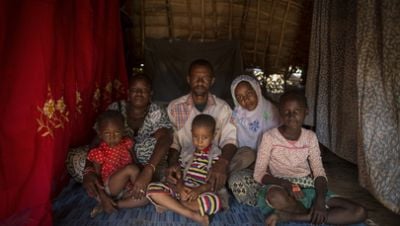“Clear skies with intermittent thunder and lighting” is an odd forecast but an apt description of the larger world we live in. In whatever sunny place you are, you have likely been affected at some point, to some degree, by dark occurrences in far away places.
Distant thunder has a way of disrupting peace and quiet. A volcanic eruption in Indonesia in 1863 blackened skies in Norway. An eruption in Iceland in 2010 disrupted food supply chains in Africa and Latin America. These are natural disasters but civil conflicts in fragile states and bank failures in advanced market economies can generate equally wide ripples across borders. Witness the financial crisis of 2008 and the massive refugee flows triggered by the ongoing conflicts in parts of Africa and West Asia. These are all instances of trans-border vulnerability.
At this moment, the EBOLA outbreak in West Africa is affecting safari tours in East Africa. Korean Air has suspended service to Kenya (even though there is no case there). The WHO has urged calm but vulnerability is felt far and wide. Are we overreacting? Or not reacting enough? Probably both and, yes, the problem is deeper and more complex.
Vulnerability transcends borders but at the epicenter are vulnerable societies and people. It is no coincidence that the 3 countries most seriously affected by EBOLA—Guinea, Sierra Leone and Liberia—rank very low on the Human Development Index. People living in poverty and on the margins of forests subsist on primate meat. Health and sanitation systems are rudimentary. The conditions are ripe for contagion.
The immediate policy response to crisis must be humanitarian, involving short-term protective and palliative actions. But if future crises are to be avoided, there is also need for longer-term developmental responses with more durable impacts. Nongovernmental agencies are often the first to respond to crisis but governments and international organizations must shoulder the brunt of the larger effort. That includes policies to mitigate or lessen the threat of repeated crises through preventive actions, as well as policies that strengthen the capacity to adapt to crisis and thereby bolster resilience.
Ensuring a timely, coherent, collective and sustained response is the task of multilateral cooperation. All three types of policy response—protection, mitigation and adaptation—may entail collective action, involving multilateral institutions (e.g., WHO in the case of the EBOLA crisis) and involve technical assistance and financial support. A principal concern in any policy response is the vulnerability of particular groups, and the possible need to redistribute its incidence from less capable to more capable actors (whether individuals, enterprises or institutions in the private or public sectors), and from national levels to regional and global levels.
Trans-border vulnerabilities—several are illustrated in my background paper—are becoming more significant with globalization and population growth. In some areas (like world trade), we have the rules and institutions for collective response (to guard against protectionism and aid the least developed countries). In other areas (like finance and investment), we need to strengthen existing arrangements (to address financial volatility and market disruption, and raise the standard of corporate conduct). In yet other areas (like migration and climate change) we need to devise new forms of collective governance. This is not easy.
Acting in concert is not instinctive. Countries think national, not global. An initial hurdle is to elevate national interests to a higher level of mutual and collective concern. Another hurdle is to project a comprehensive view, which extends beyond immediate threats and shocks, and addresses underlying causes and longer-term impacts. Both these hurdles are more easily overcome with the participation of civil society and other stakeholders in intergovernmental dialogue.
While policymakers fall victim to the sovereignty paradox, stakeholders do not. Decision-making is a political process that can stall with competing national self-interests and short-term considerations. However, nongovernmental organizations, civil society, trade unions, private sector, local legislators (e.g., the Green Party) and even individuals (e.g., the campaign to ban land mines) can propel governments into action.
Finally, multilateral action can proceed at different levels—bilateral, regional or global—and all are desirable. Early warning of natural disasters is particularly effective at the regional level (e.g., the systems for the Indian Ocean or the Pacific Rim). Also promising are regional approaches to alleviating the plight of displaced persons in conflict situations.
There has been notable advance towards the millennium development goals. But—as Sun Tzu taught in the Art of War (500 B.C.)—“An army will march only as fast as its slowest Unit.” In the advance to higher levels of human development, it is important that we not leave others too far behind. Apart from altruism, it is in the self-interest of the strong that the weak not make the whole vulnerable.
Khalil Hamdani was the director of the Division on Investment, Technology and Enterprise Development at the United Nations Conference on Trade and Development (UNCTAD ) from 2006 to 2007, and Special Adviser to the South Centre from 2007 to 2009.
This blog post was drawn from the Human Development Report Office 2014 Occasional Paper entitled: Transborder Vulnerabilities.
The HDialogue blog is a platform for debate and discussion. Posts reflect the views of respective authors in their individual capacities and not the views of UNDP/HDRO.
Photo by Ian Bogg, Creative Commons license.


